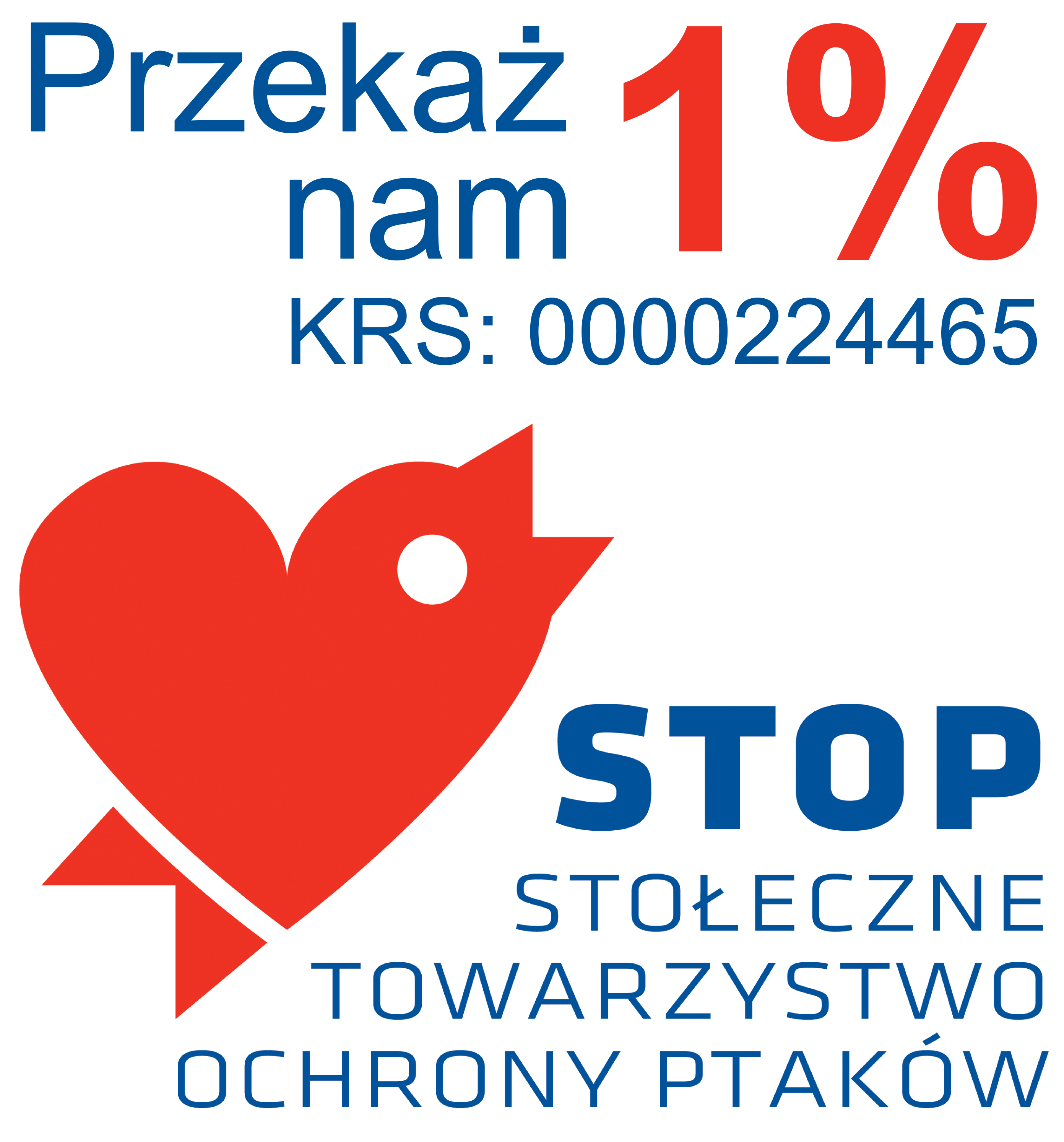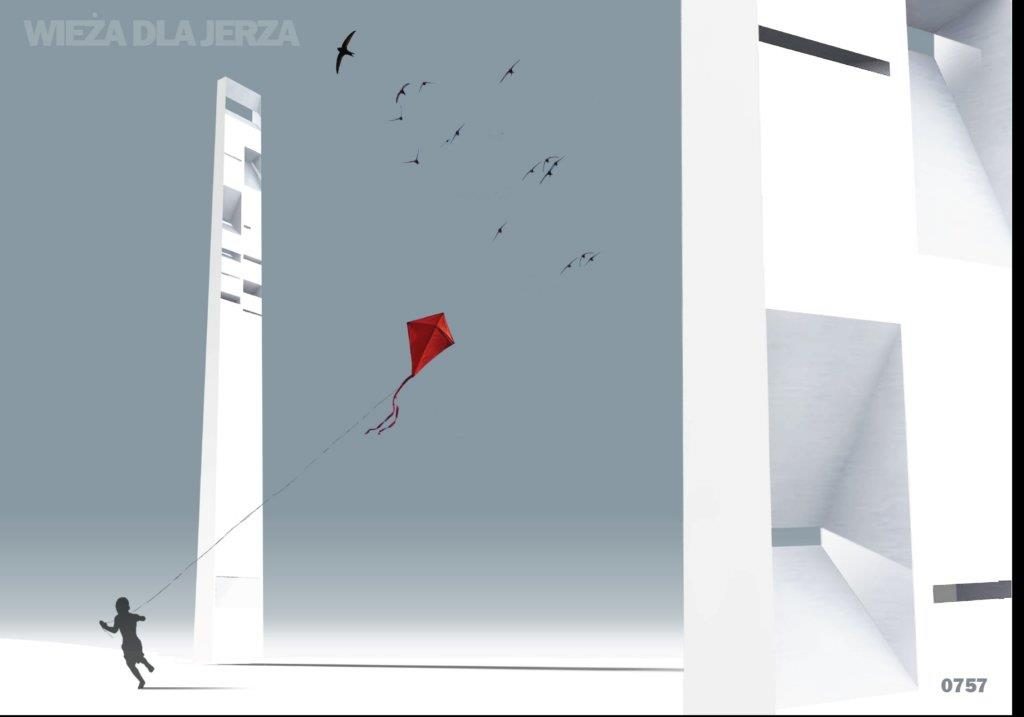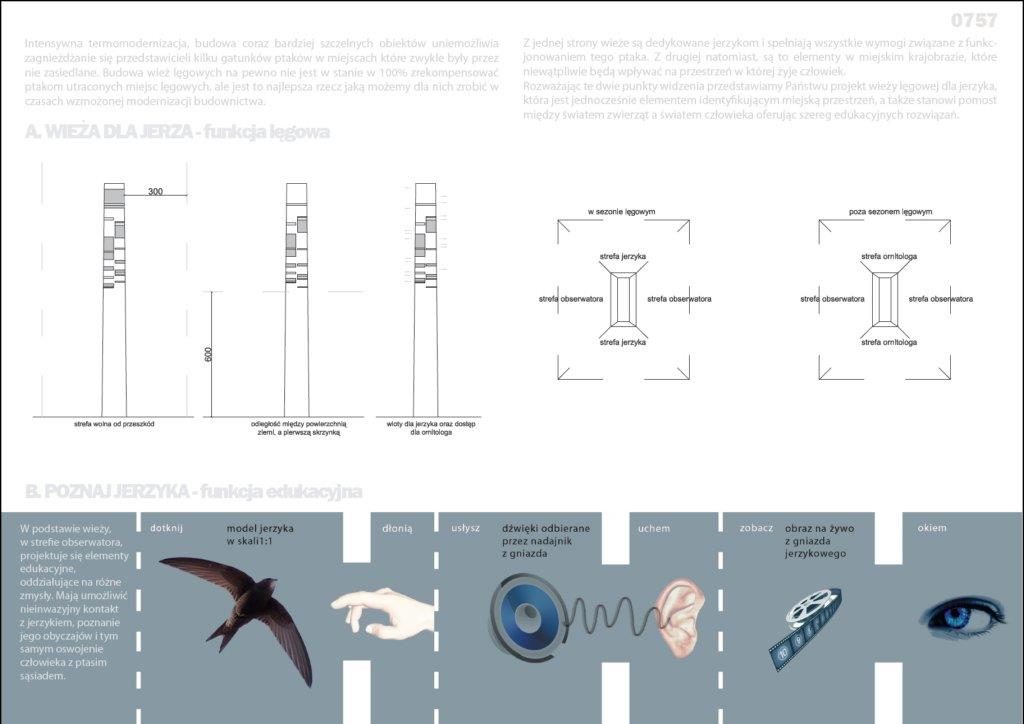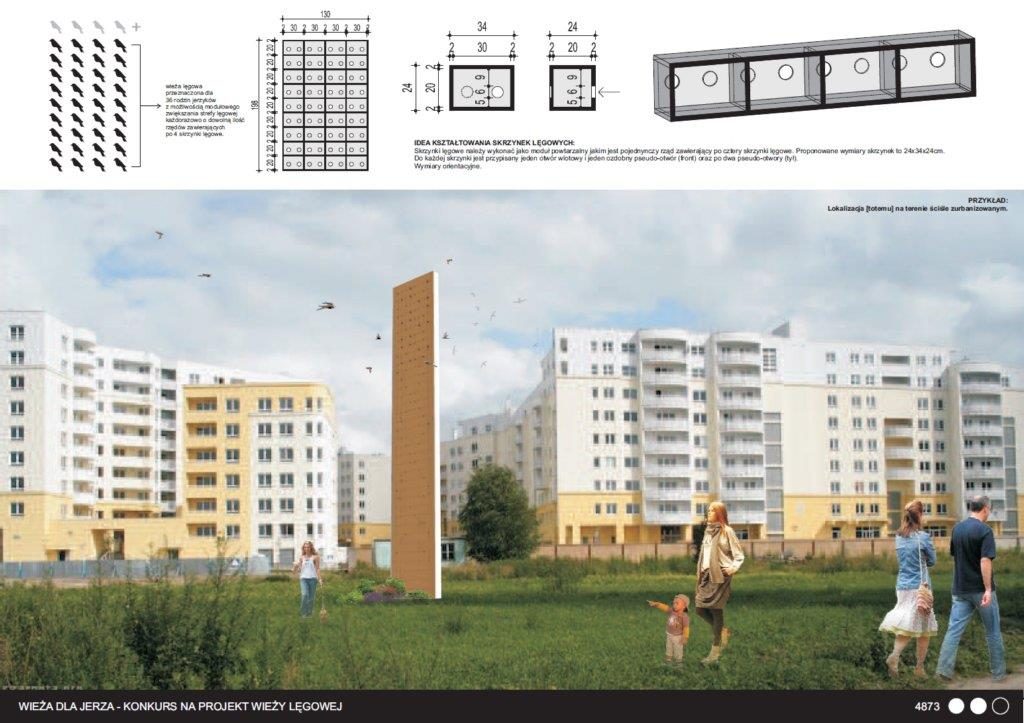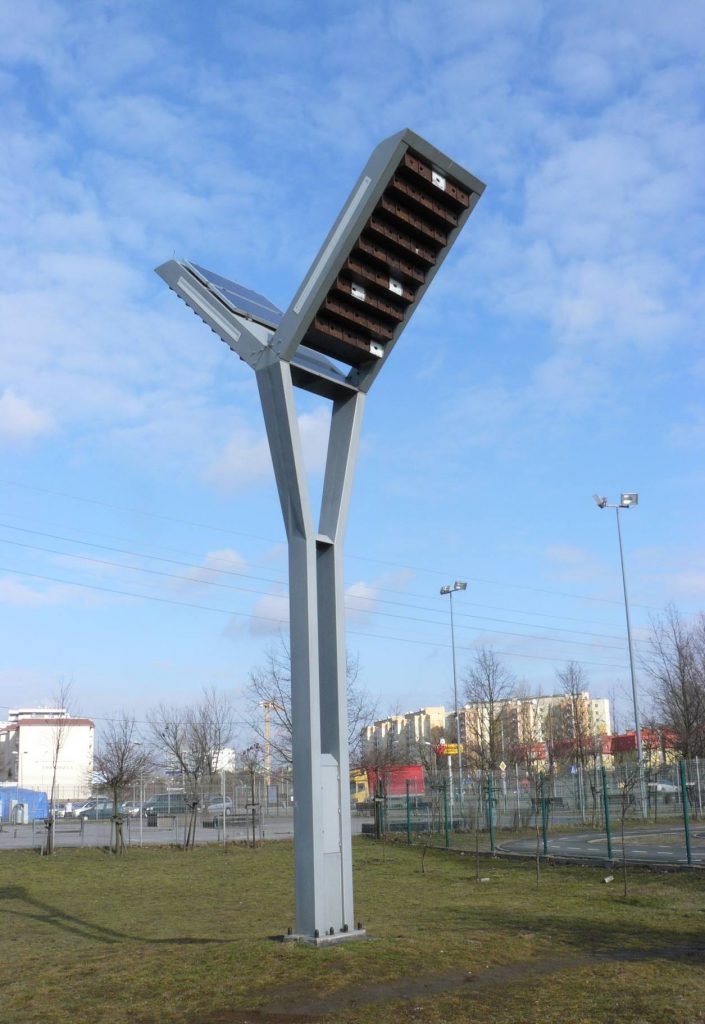There you can read something about our non-government organization, Warsaw Society for Protecting Birds (STOP), and swift towers in Warsaw. Warsaw Society for Protecting Birds (STOP) is small non-government organization and protects birds especially in Warsaw. In STOP there are no employees just few volunteers. We educate people about birds and nature (children and adults, officials, police officers etc.), organise birdwatching tours in Warsaw and near the city to popularise birds, birdwatching and nature protection. We do some things to protect birds in buildings. In the big city the birds mostly nest in buildings. The biggest problem of these birds is loss of nesting places. Modern architecture in Poland doesn’t have places for birds like e.g. slots in elevation. Older buildings are renovated and after renovation there is no place for birds. Many birds are being killed during the renovations despite they are protected by law and they are so useful for human because of eating many oppressive insects. Birds nesting in renovated buildings are cause of the conflict between investors and people who want to protect birds. Europe observes decline in populations of birds like common swift or house sparrow. In many European regions these birds are nearly extinct.
 Pict. 1. Commonswift with caught insects (Photo Maciej Szymański)
Pict. 1. Commonswift with caught insects (Photo Maciej Szymański)
Protection of birds in buildings. How to achieve this?
People from NGOs often think that the most important we can do for Swifts is doing interventions to save Swifts from mure alive during building renovation. Many scientists and naturalists think we can protect birds only with nestboxes, surveys, conferences, meetings with officials and lectures. Practicioners think the most important is carrying out an ornithological census before building renovation. We do interventions, lectures, bird censuses in buildings, education and hang nestboxes – and we can see it’s not enough. The life of birds in buildings depends the most on millions of common people, local inhabitants. There are so many buildings and so many inhabitants. To protect the Swift and other species in buildings everybody have to KNOW about animals and LIKE animals. How to achieve this?
What is a Swift tower for?
A small architecture just for Swifts is one of the way to do something for the protection of Swifts. So we planned to build swift towers for Commonswift (Apus apus). It is possible to build swift towers in green areas and in estates. We want to protect birds throughout educating people, building places for birds, attracting attention of media for the swifts and other birds in buildings. To protect Swifts we have to make millions of people to know and love Swifts. We cannot make people know and love Swifts without TV and other media. Only with TV we can say to everybody: there are birds in buildings and humans need them and have to protect them. We have no money for TV programmes – one such programme is much more expensive than the biggest Swift tower. That is why STOP wants to build swift towers. Swift tower.
The good example from USA
A small town in USA has a big construction like metal tower for birds (Purple Martins). Griggsville is proud and happy because of a bird and everybody in the town wants to have nest boxes or small „tower” for Purple Martin. The town is well known in the world becouse of the bird they love and protect. Grigsville can have its bird so Warsaw can has, love and protect its own: Swift.
The competition
The first step for us was the competition for the design of swift tower. It was made in the year 2011 with the President of Warsaw as a honorary patron of the event. The swifts are insectivorous and Warsaw authorities want the birds to help to protect the city from various insects.
There was no other price in our competition (called in Polish Wieża dla jerza) but the satisfaction for the winner but we received tens of very interesting and varied designs.
Guidelines for Designing Swift Towers
The most guidelines in our competition were based on Guidelines for Building Swift Towers which were developed by Commonswift Worldwide and FRIENDS OF THE SWIFTS R.A.. In brief our guidelines were like this:
A Swift tower comprises two parts, the tower structure itself and the nest-box assembly, the design of which allows the birds easy access to a safe nesting site and also permits ornithologists safe access to the nests for monitoring, maintenance purposes etc..
Nest-box assembly
The basic inside dimension of any one box is 120 mm high, 180 mm broad and 300 mm long. The size of the round entrance hole is 50 mm in diameter and should be placed some 50 mm above the nest box floor level. To enable human (ornithologist) access to each nest place, the nest boxes need to be fitted with access doors.
Tower structure
- The tower should have a life of many years and have enough nest-boxes for at least over a dozen pair of birds.
- The nest sites in the tower should be at least 6 metres above the ground.
- Unauthorised access to the tower needs to be prevented. Vandalism needs to be deterred by the use of non-flammable materials, un-climbable surfaces and an attack-resistant structure.
- The nest sites in the tower should be sheltered from solar radiation, rain, wind etc. and be secure against predators, whether mammals or birds.
- The tower design should be esthetic, could be like a modern art, urban sculpture or something very simple and easy to duplicate in many places. The tower should be possible to build in a green or built-up areas.
The winners
There was one winning project and 6 others awarded in the competition. The gallery of the projects is in Internet on STOP’s website: http://stop.eko.org.pl/wp/blog/2012/01/21/konkurs-wieza-dla-jerza-galeria-nagrodzonych-prac/
There are only few visualizations of the towers:
Pict. 2. and 3. The first prize, architects Katarzyna Kruk and Dorota Flor. The tower with multimedial part for educating people.
Others awarded designs:
Pict. 4. Architect Rafał Pieszko, menthol architects – natural architecture laboratory.
Pict. 5. Architects: Patrycja Pyzalska, Mirosław Barcik, Aleksandra Grabara, Anna Bil, Anna Nowak Barcik. PRACOWNIA PROJEKTOWA FERO PP.
The first Swift tower in Poland
After the competition we started to look for an oportunity to build the first tower (talking with many people, media, companies). One of local officials heard about Swift towers in the media and offered help with building the first tower. Money came from a local Warsaw goverment, I was just an adviser. The first swift tower in Poland was build in Warsaw, the district Białołęka. The tower has 90 nesting places, it’s own electicity from solar panels for mp3 player with calls of the Commonswift (using to attract swifts).
The first breeding season (2013)
After the end of the first breedeng season in the first tower in several nestboxes located in the lowest rows we found feathers of tits, which apparently roosted there. There was also some grass but we don’t know whether it was brought by sparrows, tree sparrows or swifts.
Not surprisingly, there were no traces of swifts but the lack of any other species (starlings, tits) was strange – perhaps the front wall of the nest boxes in the tower was too thin and avoided by birds?
Modifications
Some fronts of the boxes were paint the white, some made thicker and some holes were made round and bigger (47 mm).
The second breeding season (2014)
After the end of the second breedeng season we found traces of the Commonswift:: two nests and a broken egg. There was moss in several nestboxes brougt by tits.
The third breeding season (2015)
After the end of the third breedeng we found many traces of activity of Commonswift. There was nesting material in 18. nestboxes:
single feathers and dandelions, sometimes glued, brought by Swifts – in10 nestboxes; base nest – a lot of glued feathers but not a fully-formed cup in 1; early-stage Swift nest glued to material brought by tits and starlings in 7 nestboxes. There were traces of tits and starlings activity too: nesting material (not much) brought by tits in 5 nestboxes; starling and tit material mixed –in 8 nestboxes; material Starlings applied (not much) in 10 nestiboxes; starling nest with no sign of successful breeding (a lot of material, almost ready nest) in 4 nestboxes; starling nest after hatching in 1nestbox. In one nestbox there were birch leaves found – hard to say what brought them, maybe a Flycatcher.
Pict. 6., 7. The first Swift tower in Poland after modifications made in 2014 . (Warsaw, a district Białołęka) (photo Dorota Zielińska).
 Pict. 8. Nestboxes in the tower (photo Adam Tarłowski).
Pict. 8. Nestboxes in the tower (photo Adam Tarłowski).
More swift towers in the world and the swift towers calendar
STOP called for designs of a tower for Swifts; launch of broad promotion of the tower concept. The competition STOP made was in 2011.
The first tower in Warsaw (district: Białołęka) and the first one in Poland was built in 2012. In 2014 several projects of towers are submitted to the „citizen budget call” in Warsaw. One of them was the project of STOP: a Swift tower in the district of (Praga Południe, Kamionek). In 2014. the local goverment in a Warsaw district Wilanów erects two towers designed by Zielona Góra University. In 2015/2016 two towers in the district Praga Południe, Kamionek were built within the citizen budget. There in Great Britain and northern Ireland were build two swift towers identic to the first swift tower from Warsaw: in Exeter and Belfast in 2015.
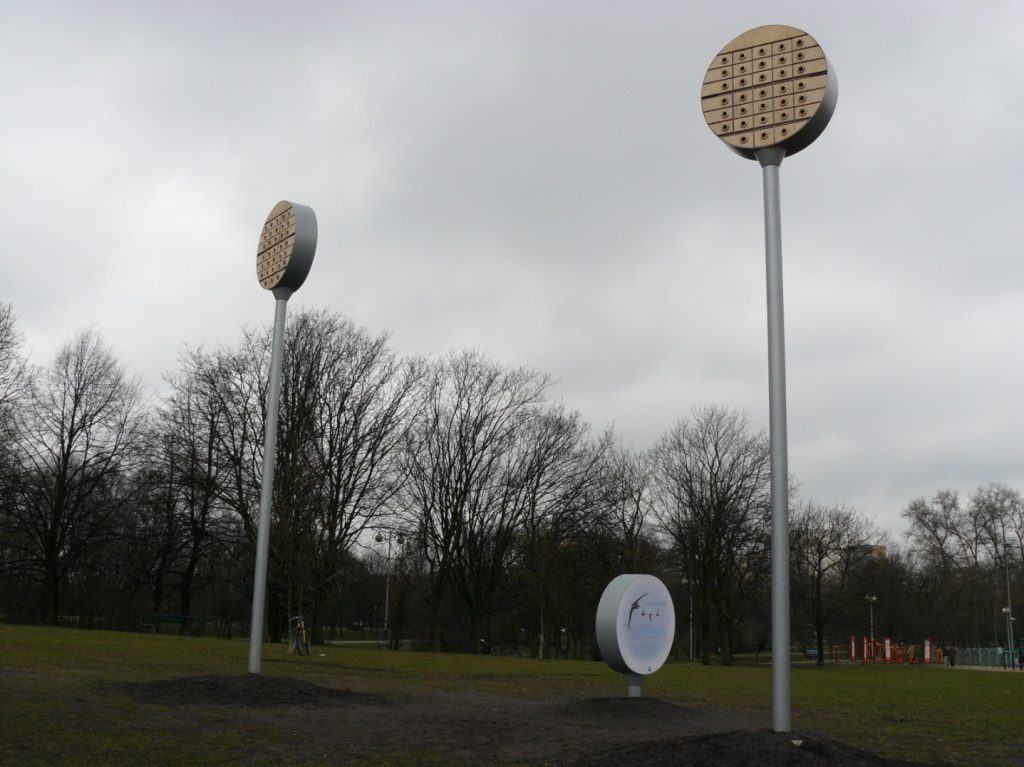 Pict. 9. Two swift towers with an educational board about protecting Commonswift in Warsaw district Praga Południe (photo Dorota Zielińska).
Pict. 9. Two swift towers with an educational board about protecting Commonswift in Warsaw district Praga Południe (photo Dorota Zielińska).
 Pict. 10. Two swift towers in Warsaw district Praga Południe- view from the side of solar pannels (photo Dorota Zielińska).
Pict. 10. Two swift towers in Warsaw district Praga Południe- view from the side of solar pannels (photo Dorota Zielińska).
Many people and many towns want to have a Swift tower. Media are interested in Swift towers and every year we are on TV and other media several Times just because of the towers. Than we can say something protection of birds nesting in buildings.
People from the whole Poland keep asking about the towers. There have been more than 20 towers built in Poland since 2012. Towers were built in: Białystok, Gdańsk (2 towers), Kielce, Piła (4), Lublin, Puławy, Tarnobrzeg (2), Toruń (4), Zielona Góra (3?). Towers are planned to be built in: Plock, Mielec, Elbląg. Towers were very often covered by citizen budgets (e.g.: in Warsaw, Zielona Gora, Lublin, Piła (4), as well as other resources, e.g. in Gdansk (2, financed by the Provincial Fund for the Environmental Protection).
Jerzykownik = a swift house
Jerzykownik is a kind of small swift tower one can put everywhere. It’ smaller and much cheaper than bigger, spectacular Swift towers.Big, metal swift tower can cost 16000 euro, a small swift house can cost only 1600 euro. It is designed and build by Adam Tarłowski from the Ussuri company. There are seven of that kind of swift houses in Warsaw and five in a small town near Warsaw. There are nestboxes for other species, not only Swifts – it is a kind of experiment . Adam Tarłowski wants to check what do swifts prefer and what kind of interactions between species there will be.
 Pict. 11. and 12. Jerzykownik = a swift house (photo Adam Tarłowski).
Pict. 11. and 12. Jerzykownik = a swift house (photo Adam Tarłowski).
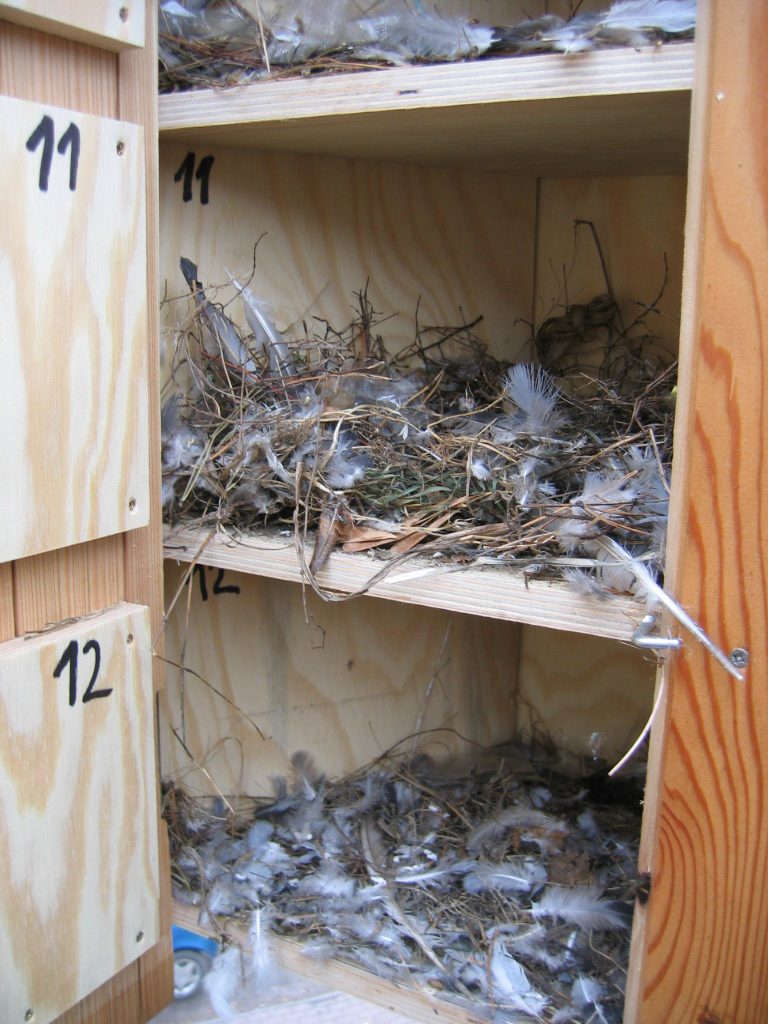 Pict. 13. Inside a swift house (photo Adam Tarłowski).
Pict. 13. Inside a swift house (photo Adam Tarłowski).
Jeśli uważasz, że działalność Stołecznego Towarzystwa Ochrony Ptaków jest cenna i warta wsparcia, Wpłać darowiznę!
